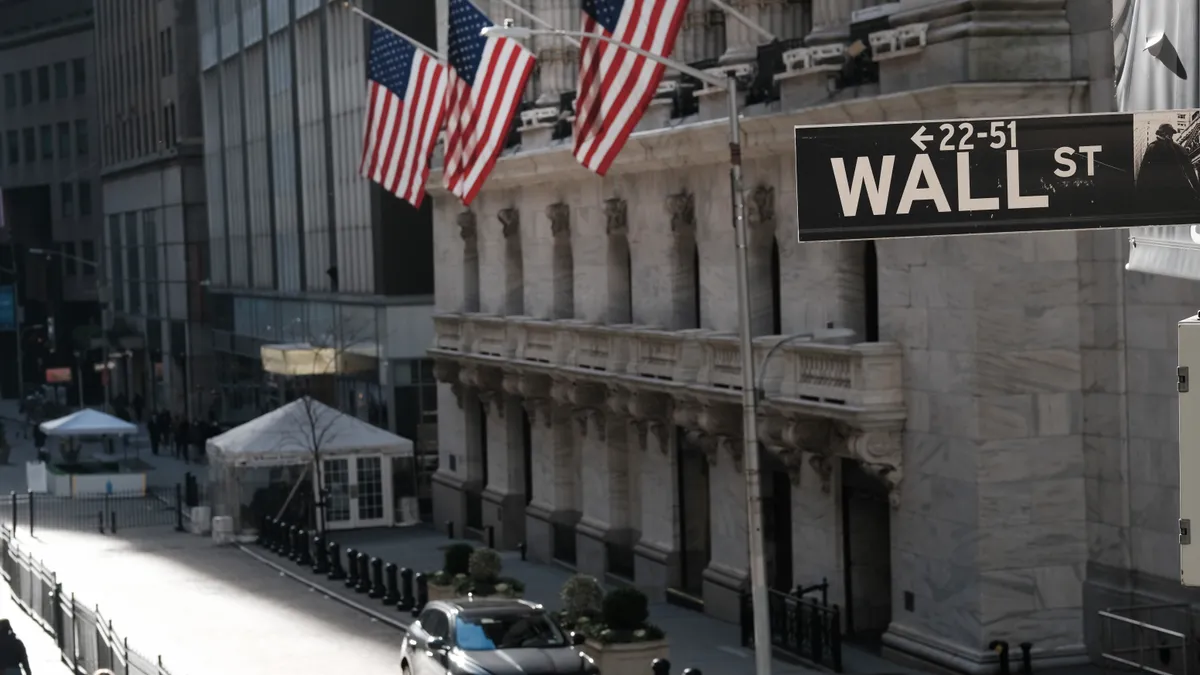Dive Brief:
- The market in special purpose acquisition companies (SPACs) poses risks to investors from celebrity hype, conflicts of interest, a scarcity of basic information and an abundance of the so-called blank check companies chasing a limited number of opportunities, according to the CFA Institute.
- “The mounting numbers of SPACs already in the public market pose growing investor protection concerns,” the CFA Institute said in a “SPAC Crib Sheet” highlighting “key structural, risk and conflict issues that investors should understand.”
- Long-term investors who buy a SPAC “must understand this — successful, long-term venture capital investing requires, one, a diversified portfolio of plausible business prospects (not celebrity sponsors or futuristic dreams) and, two, a holding period of five to seven years,” the CFA Institute said. “Picking one or two SPACs on a whim and expecting to strike performance gold is more like buying a lottery ticket.”
Dive Insight:
CFOs aiming to take their companies public by merging with a SPAC have more choices of partners than ever before. As of today, 602 SPACs are searching for companies to combine with in an initial public offering, according to SPACInsider.
“Investors should be aware that competition is fierce,” the CFA Institute said.
SPACs in 2021 brought to market a record 613 offerings and raised more than $162 billion, a total exceeding all previous years combined, SPACInsider data show. The pace has recently slowed, with just 41 SPAC IPOs so far this year.
Tougher regulatory scrutiny probably explains some of the fall-off in SPAC IPOs.
Securities and Exchange Commission Chair Gary Gensler has repeatedly expressed concern that SPACs pose risks to investors.
Gensler said in May that the agency will investigate how the shell companies raise cash from the public and merge with target companies. He has asked agency staff to recommend robust disclosure rules for SPACs.
“SPAC sponsors generate significant dilution and costs for investors,” Gensler warned during a meeting of the agency’s Investor Advisory Committee in September.
In a Dec. 9 speech Gensler noted the need for safeguards against fraud and conflicts of interest, saying “I believe the investing public may not be getting like protections between traditional IPOs and SPACs.”
A SPAC has been perceived to be a faster, cheaper way to raise money than through a conventional IPO. It sells shares listed on a stock exchange and then merges with a private company, usually within two years, in a so-called de-SPAC transaction.
SPACs pose several hazards to investors, according to John Coates, acting director of the SEC’s Corporation Finance Division from February until October 2021.
Several myths about the legal underpinnings for SPACs have influenced the perceived costs, benefits and risks of the shell companies and distorted capital markets, Coates said in a research paper.
SPAC promoters have made many groundless claims, including that the SEC changed SPAC accounting rules last year and that traditional IPOs are slower than SPACs to complete the SEC registration process and, unlike SPACs, cannot provide projections, Coates said.
“By repeating continuously these myths, the professionals repeating them are attempting to make [it] more likely that they will generate rents in future SPAC deals,” according to Coates, a Harvard Law School professor.
The CFA Institute echoed some of Coates’s criticisms.
A SPAC sponsor within two years must either find a merger target or liquidate and not receive reimbursement for expenses and fees, the CFA Institute said.
“The sponsor will find a deal at all costs — even weak deals — in order to recoup their significant setup costs in doing a SPAC IPO,” Kurt Schacht, head of advocacy at the CFA Institute, said in an emailed response to questions.
The institute favors rules requiring “better and more prominently displayed conflicts disclosures,” Schacht said.












